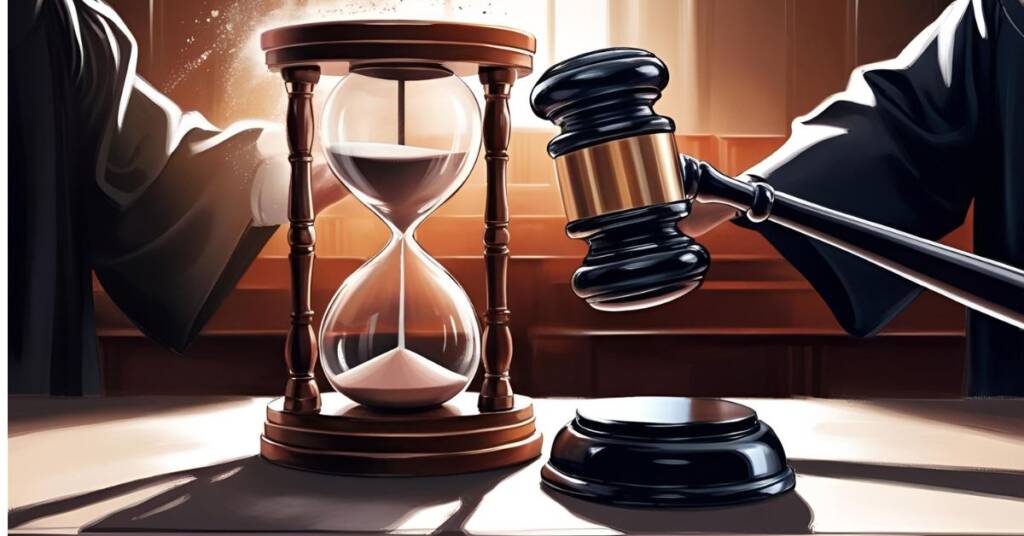Most people know what Bankruptcy is however, there is often more than meets the eye and not all cases are as open and shut as people hope. Over the past decade, we have seen hundreds of enquiries from people who have been made Bankrupt. Most of these issues stem from the Bankrupt not fully understanding the ramifications.
Below we walk you through the process of Bankruptcy, from the second you fill in your application to the point when it is finally removed from your credit file.
Your Initial Application
After deciding to go Bankrupt, with professional advice, the first step is to complete the Bankruptcy application. This is completed online in England, Scotland and Wales. In Northern Ireland, applications must be submitted in writing to the court.
A court fee is required, this is £680 in England and Wales, £640 in Northern Ireland and £150 in Scotland.
An adjudicator will then review your application, most Bankruptcy applications are approved with no issues. However, if there are discrepancies or incorrect information on an application, this can have serious legal implications.
Once your application has been accepted you will be declared officially Bankrupt. In England, Scotland and Wales this is usually completed in 2-3 days and does not require an appearance. In Northern Ireland, you have to appear at your Bankruptcy hearing and it can take up to 7 days.
After this your Bankruptcy will be published in The Gazette, which is publicly available.
At this point, your bank accounts may be frozen as the Official Receiver/Trustee takes control of your assets.
If your Bankruptcy involves assets of less than £15,000 it will be handled by the OR (Official Receiver). If it is more than this a Trustee will be appointed.
The OR/Trustee will invite you for an initial interview, this is usually conducted over the phone but may be in person. You will be asked questions about your financial situation, debts, payments made to creditors and other factors leading to your Bankruptcy.
All your assets will be vested to the OR/Trustee to pay back your creditors. This means they can seize assets such as property and cars to pay back your creditors. Assets will only be vested back to you once all creditors have been satisfied and Trustee fees have been paid.
The OR/Trustee can also investigate the transfer of assets at an ‘undervalue’ (less than they are worth) from up to 5 years before the date of Bankruptcy.
1 Year: The Initial Bankruptcy Period – Restrictions & Potential Income Protection Orders
There are various restrictions placed on someone during the 12 months of Bankruptcy, these include:
- You can’t borrow more than £500 without telling the person or company lending you the money that you’re bankrupt
- You can’t be the director of a limited company, and you can’t play a part in running a company without a court’s permission
- If you’re self-employed, you can’t use a business name which is different to the one you used before bankruptcy, unless you tell everyone you do business with about the bankruptcy
- You’ll be barred from some jobs, for example being a charity trustee, insolvency practitioner, registrar or consumer credit licence holder
- You must cooperate with the official receiver. This includes handing over all documents and providing accurate information about your income, debts and assets
- If you live in Northern Ireland, you won’t be allowed to travel outside of Northern Ireland without permission
If you are found to have significant income this can also be taken via an Income Payment Order (IPO). This simply means if you have surplus income at the end of the month, the OR may take a percentage of this to pay your creditors. Any significant change in income should be reported to the OR.
After 1 Year: Discharge, Arrest of Discharge & Bankruptcy Restriction Orders
Generally, you will be discharged 12 months from the date you were made Bankrupt unless you have not cooperated fully with the Official Receiver/Trustee. At this point, all pre-bankruptcy debts that were included in your Bankruptcy are formally written off (See below exceptions). Restrictions such as not being the director of a company are also removed.
However, you could be given an Arrest of Discharge. This occurs if you have not cooperated or have not complied with restrictions placed on you during Bankruptcy. Arrested Discharge essentially means that your 12 months of Bankruptcy are extended indefinitely.
If you are found to have contributed to your Bankruptcy or acted to put assets beyond the reach of creditors you can have a Bankruptcy Restriction Order placed on you. This will release you from Bankruptcy after 12 months but all of the restrictions placed upon you will remain in place. These can last from 1-12 years.
3 Year Rule and 6 Years on Your Credit File
The OR/Trustee has 3 years from the date of your Bankruptcy to decide what to do with any equity in your home.
Depending on how much equity you have, they might sell the property, apply for a charging order so they can get the equity back if you sell or re-mortgage in the future, or they may give you the equity back if it’s only a small amount.
Your Bankruptcy will only be removed from your credit file 6 years after your discharge. Lenders will be able to see your Bankruptcy if you apply for loans, finance or bank accounts.
Want to Know More About Bankruptcy?
Bankruptcy is a much more complicated process than most people think. It can be used as a tool and Bankruptcy may be the best financial option for some, especially when completed smoothly. This article gives some insight into the process but, we always recommend seeking professional insolvency advice before going Bankrupt.
We also recommend appointing representation to guide you through your 12 months of Bankruptcy. You may be discharged with no issues however, the OR/Trustee is within their rights to repossess homes and assets. If this occurs, you will need professional assistance to deal with any potential legal action.



